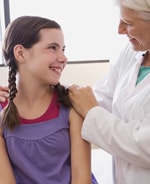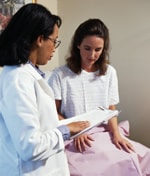Are you struggling with the cost of prescription drugs?
If you have no health insurance coverage or cannot afford prescriptions that are very expensive, you may be able to take advantage of a number of private programs that will provide some prescription drugs to you at no charge.
Most large drug manufacturers operate assistance programs to ensure that medicines are available to those who cannot afford them. The programs are generally intended for people who have limited financial resources, have no health insurance coverage, and who do not qualify for Medicaid or other government-sponsored health programs that provide prescription drugs.
Although the program guidelines to vary by manufacturer, most require an application be made to the drug manufacturer either by the patient or their physician, accompanied by a prescription signed by the physician. To qualify, you must meet income guidelines established by the manufacturer. If you are found to be eligible, most of these programs will provide a one to three month supply of the drug shipped directly either to you or your doctor.
It’s important to ask your doctor if the drug you are taking is available through one of these programs, especially since some programs may require your doctor to fill out forms or other paperwork.
There are a number of information sources to learn more about prescription drug assistance programs offered by manufacturers. One of the most comprehensive sources of program information is the Directory of Prescription Drug Patient Assistance Programs, compiled annually by the Pharmaceutical Research and Manufacturers of America (PhRMA). A copy of the directory is available by mail by calling PhRMA at 1-800-762-4636. The directory can also be downloaded directly from the Internet at www.rxassist.org
In Kentucky, the Kentucky Physicians Care Program provides one routine office visit to Kentuckians who have no health insurance or who do not qualify for Medicaid. Physicians, pharmacists, dentists, and other health care providers volunteer their time under this program.
The Kentucky Physicians Care Program also has agreements with several pharmaceutical companies to provide certain prescription drugs at no cost to eligible patients. To find out if you qualify for this program, inquire at your local Department of Community Based Services (DCBS) office. Additional information about the Kentucky Physicians Care Program is available by calling toll free at 1-800-633-8100 or by visiting the Health Kentucky website at: www.healthkentucky.org
If you are on Medicare, have no prescription drug coverage and have an annual income of less than $28,000 ($38,000 for couples) you may qualify for a new program called Together Rx. This program is provided by seven major pharmaceutical companies (Abbott Laboratories, AstraZeneca, Aventis Pharmaceuticals, Inc., Bristol-Myers Squibb Company, GlaxoSmithKline, Janssen Pharmaceutica Products, L.P., Novartis, and Ortho-McNeil Phamaceutical, Inc.) and offers savings on more than 150 widely prescribed medicines manufactured by these companies. Enrollment is free, and enrollees receive a card that entitles them to a discount of approximately 20 to 40% off the regular price of covered drugs. To apply for the program, call 1-800-865-7211 or download an application at www.together-rx.com
Medication for free? From who? What’s the catch?
Some pharmaceutical manufacturers have established programs to help make some of their drugs available free of charge to needy patients. Talk to your physician if you think you may be eligible for one of these programs. Please be aware that these are not government-sponsored programs, and while many people have received free drugs, there is no guarantee that it will work for you.
Since these programs are voluntarily developed by manufacturers, each company determines its own eligibility criteria. Many programs simply require that the physician determine that the patient cannot afford the drugs prescribed. Other programs, especially those for very expensive drugs, require a patient to meet certain income or asset criteria. Private health insurance, third-party coverage, Medicaid, or Medicare may disqualify you from an indigent patient program. Not all medications are available through these programs; consult the maker of your drugs directly.
Which pharmaceutical companies are involved in the program?
Table of Contents includes the following companies:
ALZA Pharmaceuticals
Amgen Inc
Astra Merck Inc
Astra USA Inc
Athena Neurosciences Inc
Bayer Corporation Pharmaceutical Division
Biogen Inc
Boehringer Ingelheim Pharmaceuticals Inc
Bristol-Myers Squibb Company
Ciba Pharmaceuticals
DuPont Merck Pharmaceutical Company
Eisai Inc
Fujisawa USA Inc
Genentech Inc
Genetics Institute Inc
Genzyme Corporation
Gilead Sciences Inc
Glaxo Wellcome Inc
Hoechst Marion Roussel Inc
Janssen Pharmaceutical
Knoll Pharmaceutical Company
Lederle Laboratories
Eli Lilly and Company
The Liposome Company Inc
Merck & Co. Inc
Novartis Pharmaceuticals
Ortho Biotech Inc
Ortho Dermatological
Ortho-McNeil Pharmaceutical Inc
Parke-Davis
Pasteur Merieux Connaught
Pfizer Inc
Pharmacia & Upjohn Inc
Procter & Gamble Pharmaceuticals Inc
Rhone-Poulenc Rorer Inc
Roche Laboratories Inc
Roxane Laboratories Inc
Sandoz Pharmaceutical Corporation
Sanofi Pharmaceuticals
Schering Laboratories/ Key Pharmaceuticals
Searle, Serono Laboratories Inc
Sigma-Tau Pharmaceuticals Inc
SmithKline Beecham Pharmaceuticals
Solvay Pharmaceuticals Inc
3M Pharmaceuticals
Wyeth-Ayerst Laboratories
Zeneca Pharmaceuticals















